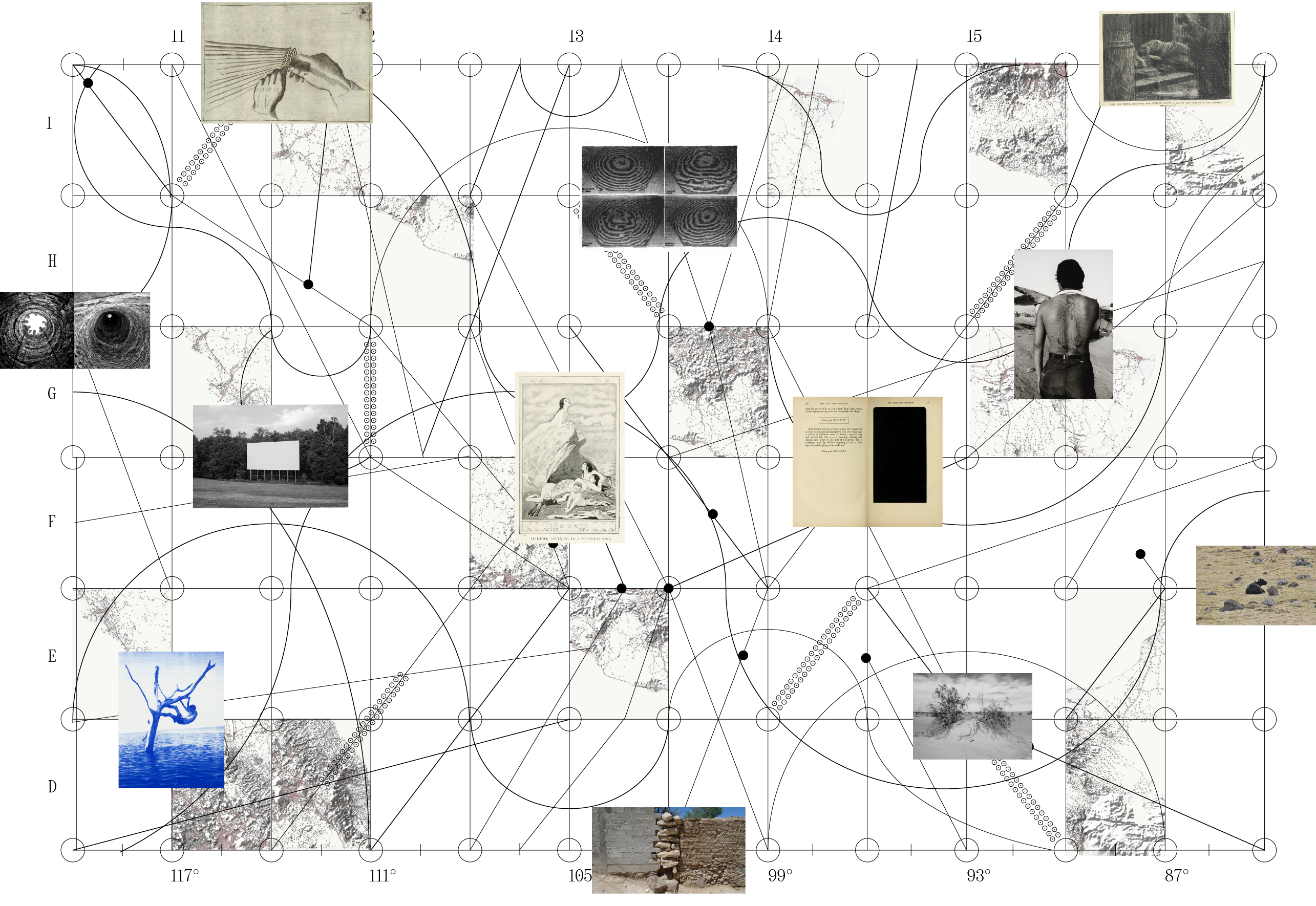Displacements: Venice Biennale
Result










(/)

(/)




(/)
For the 17th International Architecture Exhibition at the Venice Biennial—interrupted and postponed for 2021—the COVID 19 pandemic put into perspective the question “How will we live together?” originally proposed as the theme of the biennial.
Being asked—initially—to design the pavilion’s graphic identity as well as the catalogue, led the studio to reflect on other types of displacements, not necessarily physical, and explore different realms of digital experiences as forms of spatiality. This new direction opened the door to additional dynamics in the curatorial and museographic project that, in turn, initiated a solid construction of contents structured around a collective imaginary —from the concept of displacements—in the form of a glossary, as a reflection on the situated practice of architecture that posits possible ways of coexisting. Unlike a dictionary, a glossary compiles words within a single topic, words that might be unfamiliar, subject to interpretation, and under-utilized in a given context, in this case architecture.
In borrowing this editorial concept and adapting it to a physical space, (and in collaboration and dialogue with the curatorial team), we proposed over 300 images that served to illustrate the more abstract level of content, exploring every term of the glossary with the aim to create possible fictions stemming from different types of displacements in relation to architecture. These fictions were represented in a video for every term of the glossary and projected over walls made up of threads. The intention was not to deliver a precise visual image, but rather to evoke in the visitors different forms of displacement associated with architecture, as they moved through the pavilion, and create a sequential and spatial experience by building an atmosphere of reverie, as a nod to Roland Barthes’s provocation to “dream your research aloud.” [1]
These materials, as a means to evoke the concepts in dialogue, complemented other communication outlets, such as the design of a video projected on a large monitor as an “epilogue” at the end of the pavilion. The wall text, located in the entrance hall of the pavilion, was designed to simulate an open book as a “preface;” the website functioned as the inside of a book; and the social media plan as an “editorial note.” In this way, we managed to deliver a “publication” that could not possibly exist physically due to the global pandemic.
In the same way that the pavilion proposed architectural projection as a process that accommodates fiction as a method, the website aims to take the experience outside the physical space of the biennials.
[1] Roland Barthes, How to live together: Novel Simulations of Some Everyday Spaces, inaugural address to the Chair of Literary Semiology at the Collège de France, January 7, 1977.
Displacements
Mexican Pavillion
17th International Architecture Exhibition at the Venice Biennial
22.05.2021–21.11.2021
Art Director
Maricris Herrera
Team
Israel Hernández
Andrea Volcán
Interns
Esteban Silva
Lia Speckman Flores
Collaborators
Commissioner
Gabriela Gil Verenzuela
Curators
Isadora Hastings García
Mauricio Rocha
Elena Tudela Rivadeneyra
Curatorial Consultant
and Research
Natalia de la Rosa
Installation views
© Venice Documentation Project
Images
© Isadora Hastings García
© Elena Tudela Rivadeneyra
A project of the Secretaría de Cultura del Gobierno de México and the Instituto Nacional de Bellas Artes y Literatura (INBAL).









































































